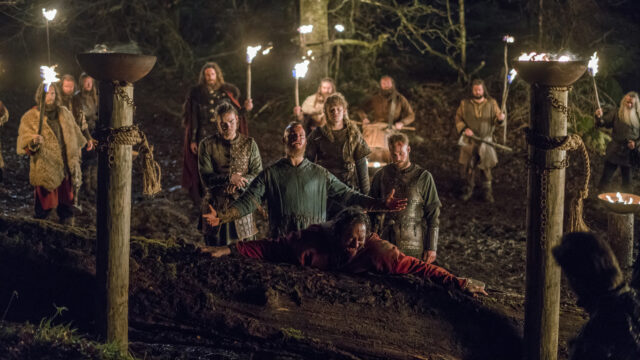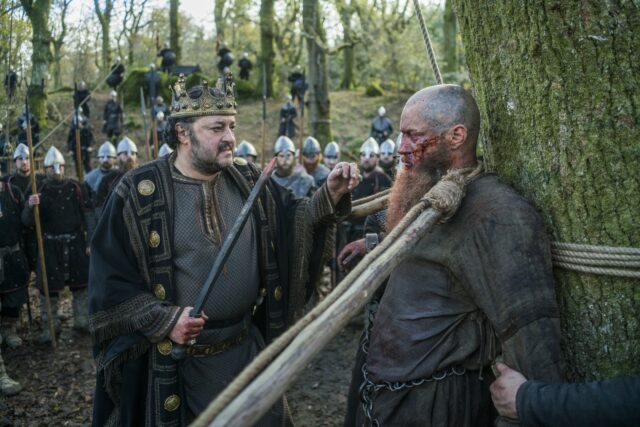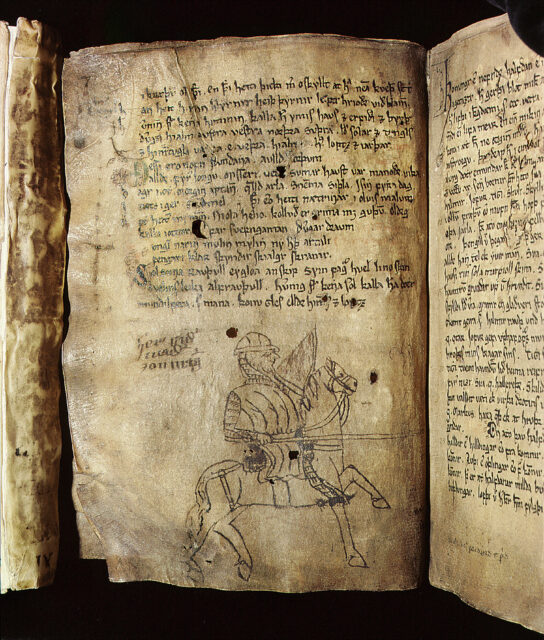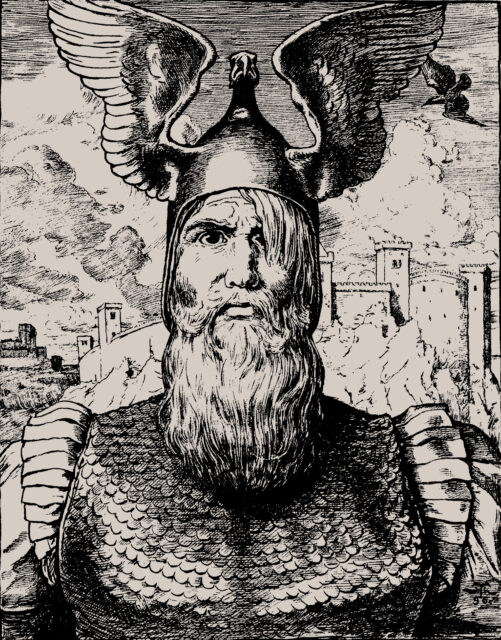One of the most horrendous and violent torture methods of the Viking era was the blood eagle ritual. This saw victims’ backs splayed open and their innards pulled out, all while they were awake and alive. Fortunately, there are few recorded instances where this torture method was used, and even those are debated by historians as glorified literary devices.
The question stands: did the gruesome blood eagle ritual ever really happen?
What is the blood eagle?

Those subjected to the blood eagle ritual were the victims of seriously gruesome torture. The victim was laid down on their chest with their hands and feet tied, so they couldn’t escape or even budge. Then, the torturer would take a knife and stab the lower portion of the back, near the tailbone. Once stabbed, the knife was dragged upward to slice the back open, pulling the skin back and exposing the victim’s ribs.
With an axe, the torturer then took great care to snap and separate each rib from the backbone, spreading them outward from the wound. This opened the victim’s back to show their internal organs, including the lungs, which the torturer grabbed and spread out over the back. This made the victim look as though they had wings, giving way to the ritual’s name. To literally add salt to the wound, the torturer would increase the pain by rubbing salt into their gaping and exposed back.
The worst of it was, the victims were alive during the entire process, meaning they felt every excruciating part. Considered one of the most grisly torture rituals in history, it’s not hard to believe the mere mention of the practice can send shivers down people’s backs.
Why was the ritual performed?

One reason the blood eagle may have been performed was because the Vikings were extremely religious people. They believed in a pantheon of Gods, ruled by the main god, Odin. Odin isn’t only the god of war, but also the god of poetry, runes, magic and of the dead. The blood eagle may have been a ritual sacrifice to him.
However, it’s more likely the Vikings considered it a suitable punishment for those who’d wronged them. From written accounts, it appears this method was used as an act of revenge. One of the earliest accounts explains this motivation perfectly, dated as far back as 867.
It explains that the king of Northumbria, Ælla, had come under attack by a group of Vikings. Their leader was Ragnar Lothbrok, but he fell victim to Ælla, who had him killed by throwing him into a pit of snakes. In retaliation for losing his father, Lothbrok’s son, Ivar the Boneless, sought revenge on Ælla and used the blood eagle ritual to do so.
In 865, Ivar the Boneless invaded England. His invasion was a success and he gained control of York. In doing so, he put Ælla at his disposal. In Þáttr af Ragnars sonum, which translates to “Tales of Ragnar’s son,” it reads, “They caused the bloody eagle to be carved on the back of Ælla, and they cut away all of the ribs from the spine, and then they ripped out his lungs.”
Some believe Ivar the Boneless wanted to make an example of Ælla, and performing the blood eagle certainly would have done the trick.
There are several examples of blood eagle killings

It seems the gruesomeness of the blood eagle ritual performed on Ælla would extend to others over time.
The Norse Earl of Orkney Torf-Einarr is recorded as having issued the performance of the ritual against Halfdan Long-leg. Halfdan was the son of Norwegian King Harald Fairhair, and in an attempt to gain more land for his father, Halfdan killed Rognvald Eysteinsson and 60 of his men by burning them in a building.
Eysteinsson’s son, Einarr, wanted revenge on Halfdan. Like Ivar the Boneless, he employed the blood eagle as his torture method. In the Orkneyinga saga, it reads, “Einarr made them carve an eagle on his back with a sword, and cut the ribs all from the backbone, and draw the lungs there out, and gave him to Odin for the victory he had won.”
Another source called Heimskringla, written by Snorri Sturluson, also described this event. “Afterwards, Earl Einarr went up to Halfdan and cut the ‘blood eagle’ on his back, in this fashion that he thrust his sword into his chest by the backbone and severed all the ribs down to the loins, and then pulled out the lungs; and that was Halfdan’s death.” According to this, Einarr performed the ritual himself.
Outside of these two accounts, there are few others who are believed to have suffered the blood eagle torture, though there is little evidence suggesting it ever happened. The Irish King Maelgualai of Munster is believed to have been killed in this way, as is King Edmund of England. Thankfully, there aren’t many in history said to have been subjected to this torture ritual.
Scholars are still unsure if it was ever real

Scholars have long debated whether the blood eagle ritual was something actually performed by the Vikings. Throughout Norse literature, the only mentions of it are the two found in the sagas previously mentioned, outlining Einarr’s use of the practice.
The death of Halfdan is believed to have taken place sometime between the 800s and 1000s, but the sagas weren’t written down until several centuries later. Additionally, the various versions of the sagas are believed to have influenced one another, making their credibility questionable. As such, many historians have come to wonder if the blood eagle was simply used as a literary tool to embellish the story.
The authors of the Norse sagas wrote down the stories that were told to them, and the reliability of oral histories has already undergone scholarly debate. As a result, some believe the writers may have spruced up the tales by adding details, like the blood eagle, to make them more entertaining.
More from us: New Archaeological Find Could Reveal Clues About Mysterious Medieval Viking City
In one of the only other mentions of the blood eagle ritual, poet Sigvatr Þórðarson wrote a skaldic verse covering its use by Ivar the Boneless. Again, this was written sometime between 1020 and ’38, several years after the actual killing of Ælla was said to have taken place. As well, skaldic verses are known to be cryptic, and because the literal translation can be interpreted in several different ways, historians have argued whether it even is a description of the ritual.
